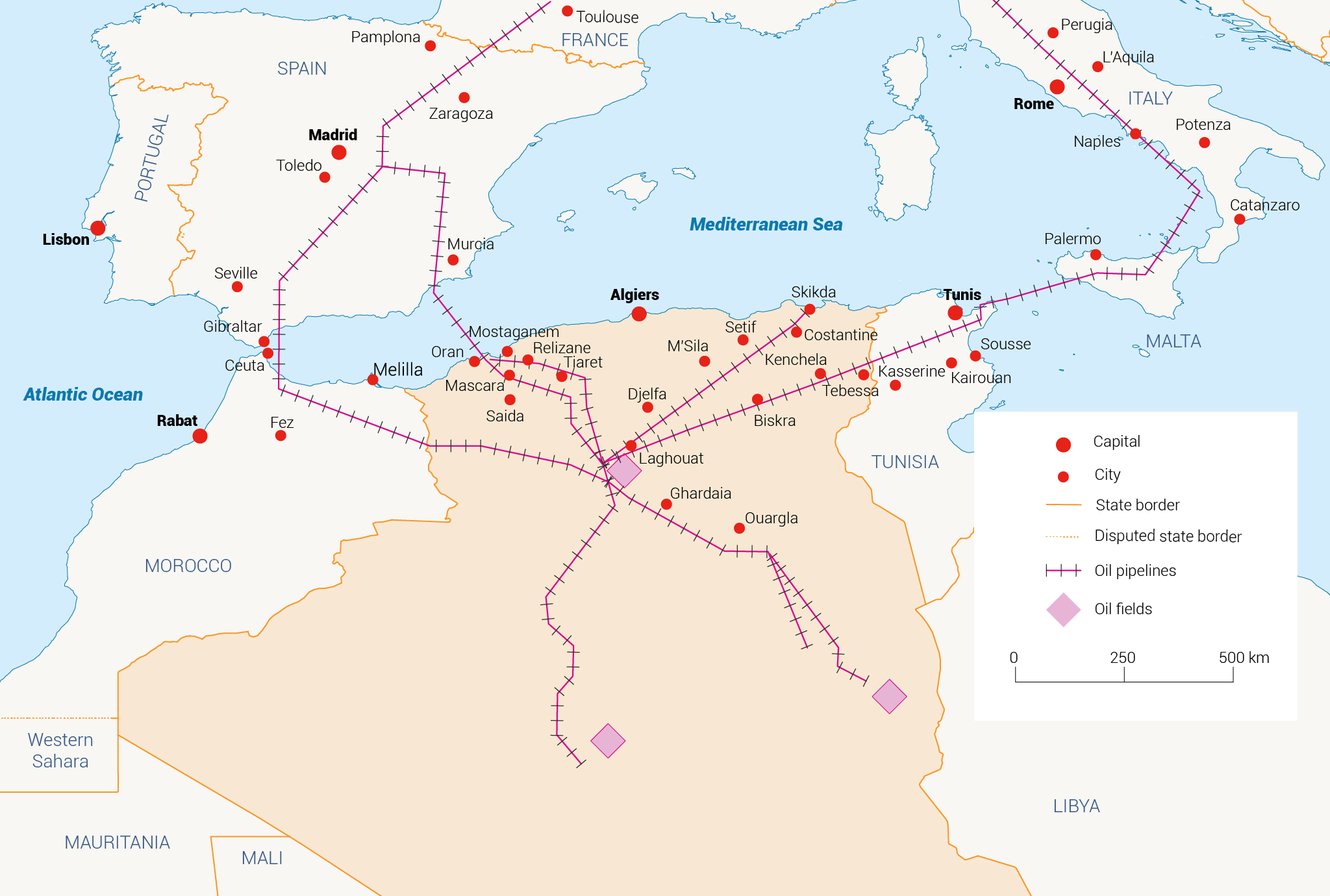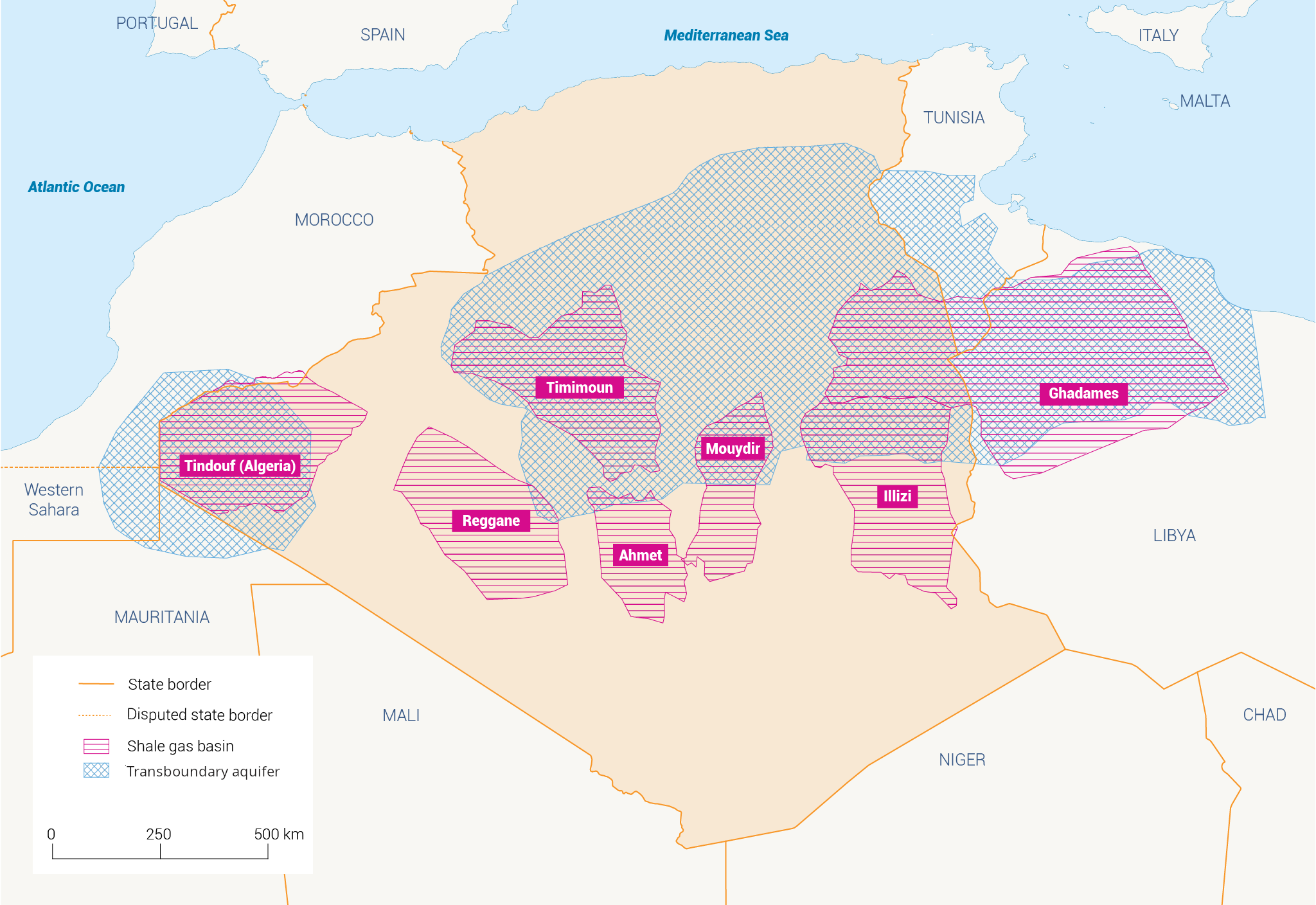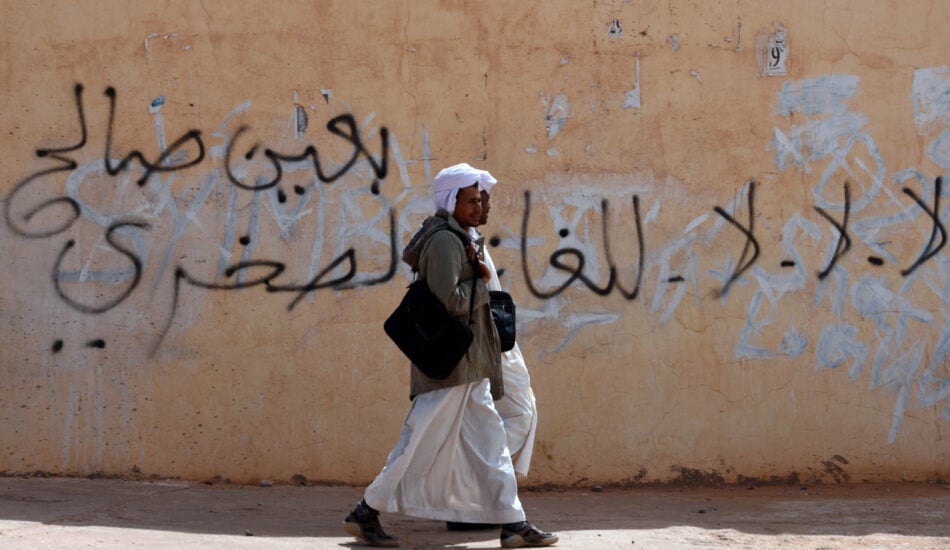
Contributors
- Author:
Walid Moulahoum : Water resource specialist and hydraulic engineer working on the application of remote sensing to monitor water resource risk in developing countries. He is involved in the sector of water in Algeria through capacity building and technology transfer and training courses for public and private institutions.
- Peer reviewer:
Abdelmalek Bermad: Dean of the hydraulic/Water Engineering department at the National Polytechnic Institute in Algeria.
Introduction
The global energy crisis, exacerbated by the Ukranian crisis and its possible repercussions on the energy supply to Europe, have left the European Union (EU) desperate to diversify its energy supply, particularly of natural gas, away from Russia. In its search for energy suppliers other than Russia, the European Commission has eyed many countries, including Algeria, as a significant external natural gas supplier to EU member states, notably Italy, Spain, Germany and France (Map 1) [1]. This has put on the Algerian agenda, the debate related to the prospects of the development of Algerian unconventional energy resources in the medium and long term.
Algeria is heavily reliant on hydrocarbons for state revenue and to generate foreign currency, with 97% of its export earnings coming directly from oil and gas. However, stagnating gas production since the 2000s coupled with mounting domestic consumption is putting Algeria under pressure to bring new fields online in order to meet domestic demand and the country’s foreign contractual obligations. This need to expand production has fuelled domestic interest in exploiting unconventional gas resources as Algeria may be sitting on the world’s third-largest recoverable resources of shale gas, according to a study commissioned by the US Energy Information Administration. Since 2014, and following the North American shale gas energy boom, the development of shale gas reserves has been seen as necessary to ensure Algeria’s energy security within the overall energy strategy. This is despite limited information on whether the US’s model can be replicated successfully [2].
At the same time, favourable geology and the extensive existing gas industry give Algeria enormous potential for developing shale gas. The technically recoverable shale gas reserves are massive; an estimated quantity close to 20,000 billion cubic metres (BCM) could secure the country’s energy needs for years to come. Despite the vast resources, several key challenges exist. For instance, implementing new hydraulic fracking technology to extract shale gas would not only require colossal financial resources, but it would also entail significant environmental damage to the (ground)water resources. This prospect has seen unprecedented numbers of citizens mobilize to resist the transition to shale gas production [3].
Groundwater, shale gas and fracking
According to the World Resources Institute’s Aqueduct Water Risk Atlas, Algeria’s baseline water stress level is very high. Renewable internal freshwater is estimated at approximately 19 BCM per year, which is equivalent to 295 cubic metres (m3) per capita. Such low water availability places Algeria among the most water-stressed countries in the world [4].
Algeria sits atop the Northwest Sahara Aquifer System (NWSAS), a huge transboundary fossil groundwater reserve with very low renewability. The water resources in this system are contained within two major overlapping aquifers, the Complex Terminal and the Continental Interlayer, which both hold around 60,000 BCM of groundwater, a 70% share of which is consumed by Algeria. This groundwater covers 96% of the water demand in the south of the country and provides irrigation for the plantations and palm groves which represent the primary income source for most of the population in the region. These aquifers also have traditional significance for the local communities, primarily through the foggara irrigation system (Photos 2), which in 2018 was added to UNESCO’s List of Intangible Cultural Heritage in Need of Urgent Safeguarding [5]. Contamination of this resource is a critical risk, and pollution would be disastrous to the local communities.
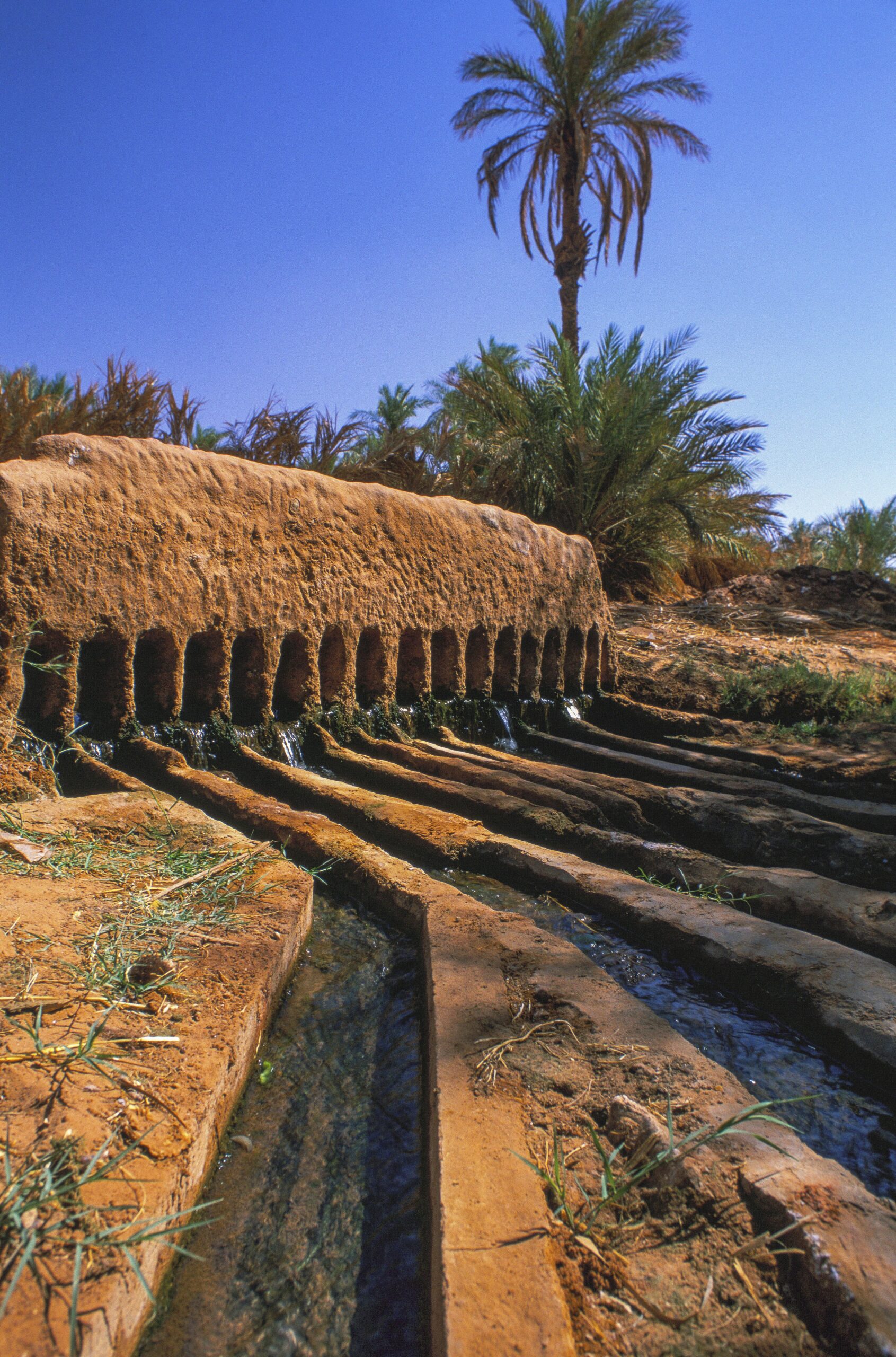
More than 95% of Algeria’s shale gas lies above the country’s largest fossil water reserve (Map 2). Experts have raised concerns regarding decreases in the quantity and quality of the aquifer as a direct consequence of the use of hydraulic fracking [7]. This technique involves injecting large quantities of pressurized liquid, into rocks to force open existing fissures and extract gas that is entrapped within. This amounts to 10 to 20 million litres of water per exploration well [8]. Scaling this up to thousands of wells would lead to substantial freshwater consumption, further contributing to the decline of groundwater water stocks [8]. Using alternative water sources such as brackish groundwater or water reuse would reduce the quantities of fresh water extracted from these non-regenerative aquifers.
The pollution risk associated with hydraulic fracking makes the situation even worse. Besides using significant quantities of water, the technique produces large amounts of wastewater containing contaminants that require treatment before disposal or reuse [9]. If mismanaged, the fracking liquid can be released by spills, leaks, or other exposure pathways and contaminate surrounding areas, including drinking water sources [8] [9]. Considerable capital investment is necessary to set up high-quality and complex water treatment facilities and minimize the risk of groundwater contamination.
Implementing best practices will be vital to mitigate the water risk associated with shale gas exploitation and make hydraulic fracking more socially and environmentally feasible in Algeria.
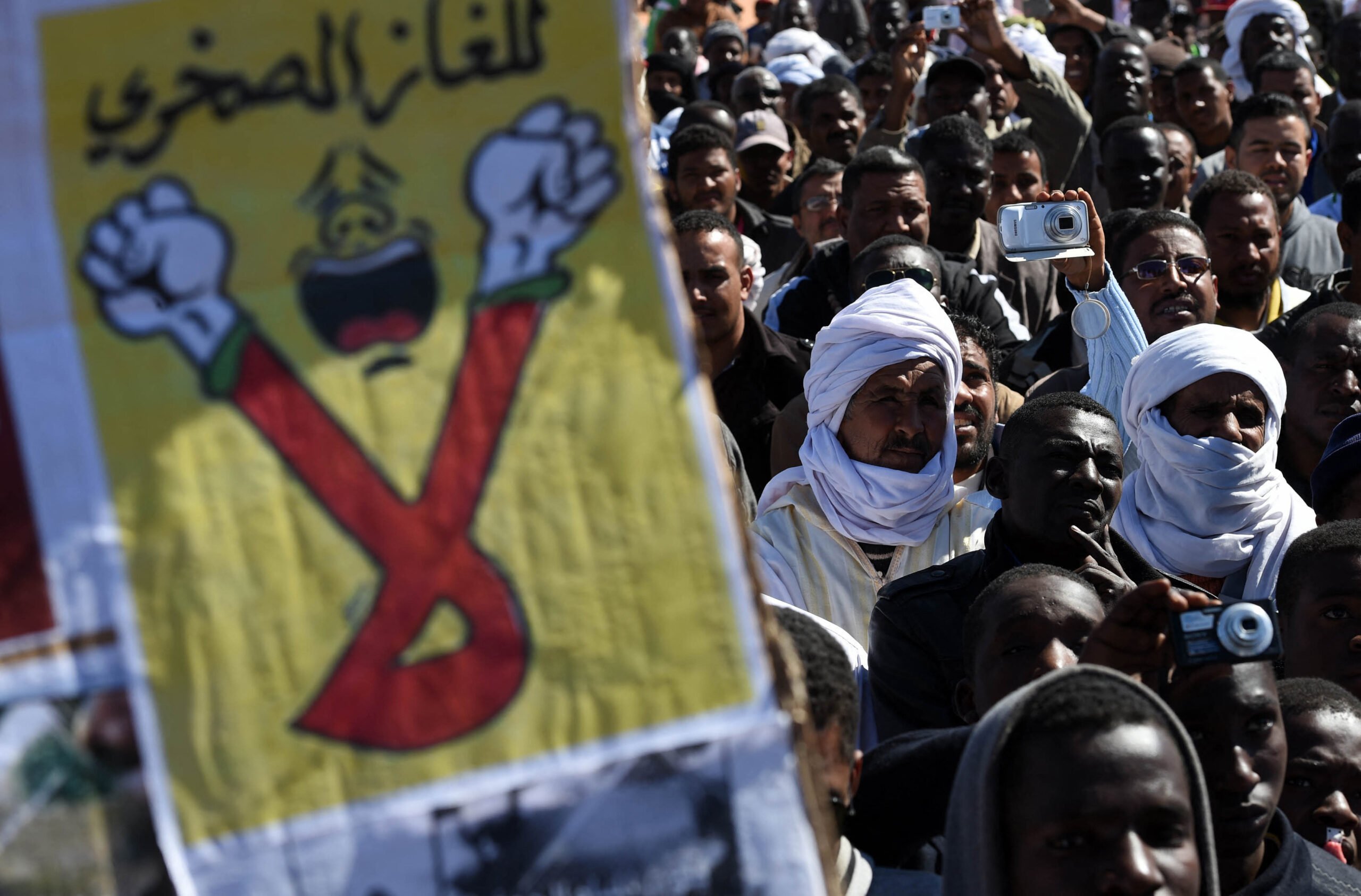
Social unrest
The exploitation of shale gas was authorized by a law passed by the Algerian Parliament in 2013. Algeria’s first exploration wells for shale gas garnered significant media attention, not for their promising results but for the local protests they triggered [11].
A protest movement took shape and gained momentum in In Salah, a town of 50,000 people 1,200 km south of the capital Algiers, where an anti-shale gas collective emerged in 2014 following the initiation of pilot wells (Photos 3). The protesters’ concerns were environmental and health-related. They focused on the impact of shale gas exploration on the depletion of aquifers that sustain the traditional oasis and agriculture in the area as well as on protection from possible contamination of water resources [10]. The movement was led by Algerian oil and gas executives and scientists who requested a transparent national dialogue on exploring unconventional resources [11]. Further support came from neighbouring desert towns and cities across the country. Eventually, more than 80 organizations from Africa, Europe, and the United States signed a collective statement of support and solidarity with the people of In Salah [12]. It is the first time in Algeria that a citizen’s movement has brought together so many women and men of varying socioeconomic status behind a purely environmental cause [13]. The protests initially spread peacefully but ultimately led to repressive encounters, during which several protestors and security forces were injured [10].
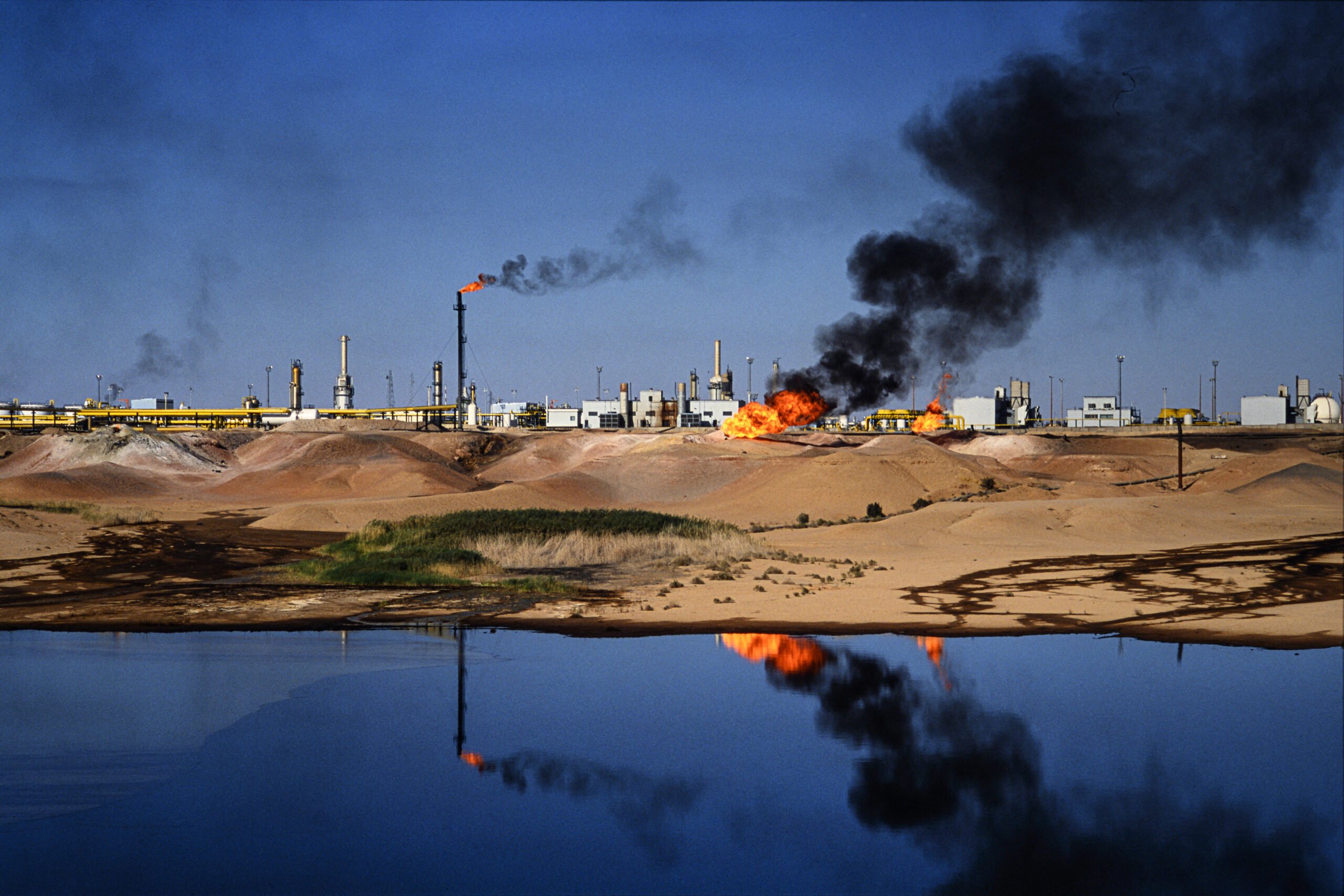
The social mobilization of In Salah’s residents has slightly succeeded in sowing some doubt in the minds of Algerian politicians and Executives in the sector and slowing down the exploitation of shale gas which was aimed to reach 10 billion cubic meters by 2022 [14]. While on the forefront, Sontarach, the national oil and gas company, has renounced momentarily to drill further pilot wells, the government, on the other hand, has shown strong determination to exploit shale gas and reverse the impact of the dramatic decline in Algeria’s oil & gas revenues [10]. Since March 2022, the Algerian president Abdelmajid Tebboune, has officially asked the general management of Sonatrach and the Ministry of Energy to start all the necessary steps for the launch of exploration and exploitation of shale gas in order to prepare for its commercialization in the briefest of times. The Algerian government does not recognize this decision openly and publicly because of the country’s fragile and worrying political position with regard to the current conflict between Russia and the West, but also out of worry of the reaction of public opinion, particularly that of the inhabitants of the south of the country [15].
This way forward, while economically beneficial for Algeria, should unlock major capital investment to set up high-quality and complex water treatment facilities and minimize the risk to groundwater resources. It should also be preceded by extensive work of sensitization of the citizens of the South region to reassure them about the control of the environmental impact. As it is an area where water resources are more valuable to its communities than any other commodity.
[1] Erbach, G, 2014. Shale gas and EU energy security. EPRS | European Parliamentary Research Service.
[2] Boersma, T, Vandendriessche, M and Leber, A, 2015. Shale Gas in Algeria: No Quick Fix. Policy Brief 15-01. Brookings Energy Security And Climate Initiative.
[3] Chibane, B, Bentchakal, M and Nedjari, N, 2014. ‘Gaz de schiste en Algérie: Aspect économique et environnemental.’ 2ème conférence Internationale des énergies renouvelables CIER-2014. International Journal of Scientific Research & Engineering Technology 3: 77-82.
[4] Rapport d’Information déposé en application de l’article 145 du Règlement par la Commission des Affaires Étrangères de France en conclusion des travaux d’une mission d’information constituée le 5 octobre 2010 sur La géopolitique de l’eau, 2011
[5] De Strasser, L, Touzi, S, 2020. Reconciling resource uses: Assessment of the water-food-energy-ecosystems nexus in the North Western Sahara Aquifer System Part 1 – “Nexus Challenges and Solutions”. UNITED NATIONS ECONOMIC COMMISSION FOR EUROPE.
[6] Mesureurs d’eau des foggaras du touat – tidikelt “kiyalin el-ma” 2018. Centre National de Recherches Préhistoriques, Anthropologiques et Historiques (C.N.R.P.A.H).
[7] Rahmouni, S, 2015. Étude des impacts environnementaux de gaz de schiste. Mémoire de fin d’étude. Université El-Hadj Lakhdar-Batna.
[8] Tahchi B, 2020. ‘Soucis environnementaux relatifs l’exploitation du gaz de schiste. L’Algérie peut-elle rivaliser les USA?’ University of Setif 1(1): 231-244.
[9] Osborn, S, Vengosh, A, Warner, N and Jackson, R, 2011. ‘Methane contamination of drinking water accompanying gas-well drilling and hydraulic fracturing.’ Proceedings of the National Academy of Sciences of the United States of America 108(20): 8172-8176.
[10] Observatoire des Multinationales, 2015. Total et le Gaz de Schiste Algérien.
[11] Jeune Afrique, 2014. ‘L’Algérie veut exploiter son gaz de schiste plus tôt que prévu.’ Published 9 December 2014.
[12] Algeria Solidary Campaign, 2015. ‘Solidarité transfrontalière gaz de schiste Algerie.’ Published 25 January 2015.
[13] Malti, H, 2016. ‘La lutte contre le gaz de schiste en Algérie.’ Relations 782: 37-38.
[14] Agence EcoFin, 2014. « L’Algérie démarrera la production du gaz schiste en 2022 et vise 10 milliards m3 en 2025 »
[15] Semmar, A, 2022, « Révélations. Comment l’Algérie est en train de lancer discrètement l’exploitation du Gaz de schiste » Journaliste Indépendant.

